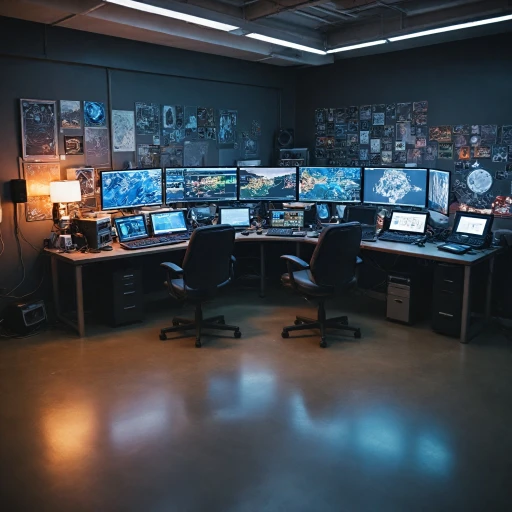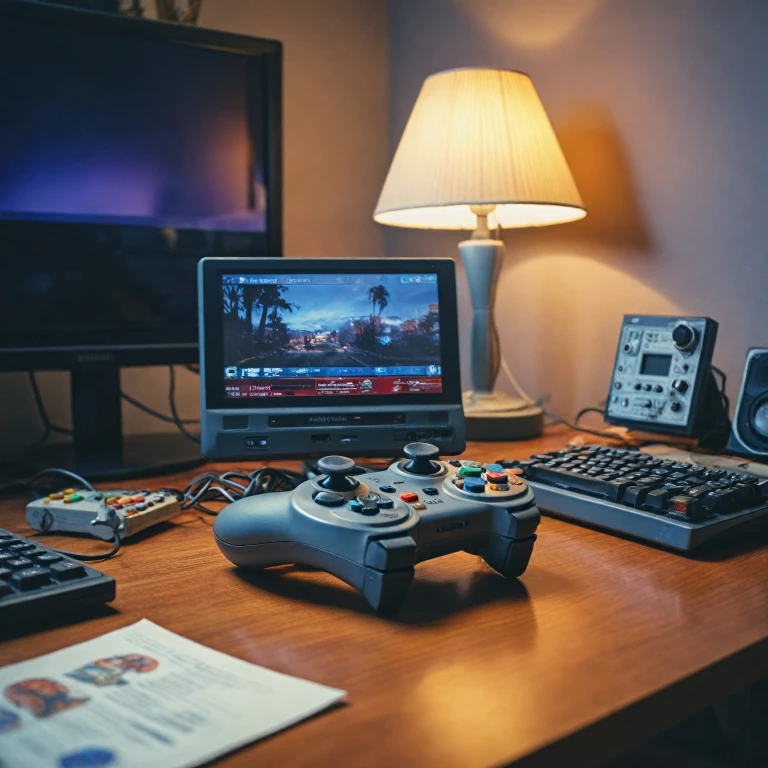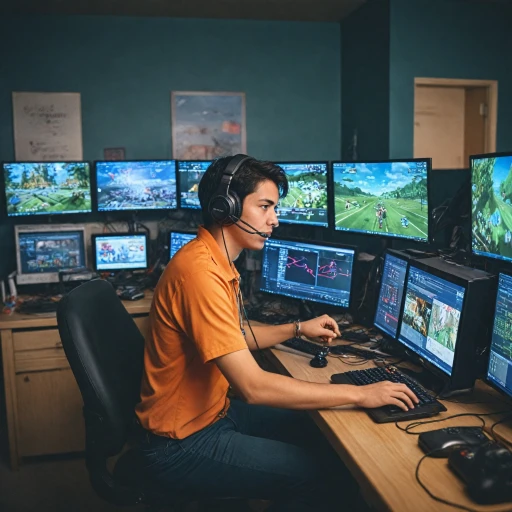
Understanding Your Retro Fighters Controller
Getting Acquainted with Your Retro Fighters Controller
The Retro Fighters Controller is a versatile piece of gaming technology that bridges the nostalgia of classic gaming with modern innovations. Designed to serve both retro enthusiasts and contemporary gamers, it features a blend of traditional design elements and new-age functionality. Equipped with pressure sensitive buttons and comfortable analog sticks, this controller is compatible with a variety of platforms, including the Nintendo Switch and PC. To fully leverage its capabilities, you need to understand its layout and features. For starters, it resembles the gamepads of yesteryear while incorporating updates to enhance user experience. It feels good in the hands, offering a great grip for extended gaming sessions. The layout includes the necessary buttons, including a switch to change between different pairing modes such as XInput mode, Defender Bluetooth, and more. When exploring the controller's wireless capabilities, you’ll appreciate its Bluetooth function that allows pairing with devices like the Switch Pro or PC for seamless play of your favorite games. The Retro Fighters Controller also includes a mode button for easy switch between platforms. As a versatile piece of hardware, understanding its fundamentals aids in setting it up correctly. Moving forward, you'll find steps to ensure compatibility with your PC, install necessary drivers, and connect effectively using USB or wireless modes.Checking PC Compatibility
Ensuring Your PC is Ready for Retro Fighters Controller
Before you dive into the gaming world with your Retro Fighters controller, it's crucial to ensure that your PC is compatible. This step will save you time and frustration later on. Here's what you need to check:
- Operating System: Make sure your PC is running a compatible operating system. Most Retro Fighters controllers work seamlessly with Windows 10 and later versions. If you're using an older OS, you might encounter some issues.
- USB Ports: Check that your PC has functional USB ports. The controller connects via USB, so having a working port is essential. If your ports are faulty, consider using a USB hub.
- Bluetooth Capability: If you're planning to use the controller wirelessly, ensure your PC has Bluetooth capability. This is particularly important for models like the Brawler Bluetooth or Defender Bluetooth controllers.
- Software Requirements: Some controllers may require specific software or drivers to function correctly. This is especially true for controllers with advanced features like pressure-sensitive buttons or analog sticks.
Once you've confirmed these compatibility factors, you're ready to move on to installing the necessary drivers. This will ensure that your Retro Fighters controller operates smoothly with your favorite games, whether you're using it in XInput mode or another configuration.
Installing Necessary Drivers
Getting Your Drivers in Line
Once you've ensured your Retro Fighters controller is compatible with your PC, the next step is driver installation. This is a crucial step to make sure your gamepad communicates effectively with the computer, avoiding any hiccups when you dive into your favorite games.
To get started, you'll need to verify if your controller is detected by the PC upon connection. Some controllers, especially those with a USB connection, might automatically install necessary drivers. However, for controllers like the Retro Fighters Brawler Bluetooth or a wireless controller in the switch pro style, manual driver installation might be necessary.
For a seamless experience, you can utilize the XInput mode, often supported by modern Bluetooth controllers. It generally offers better compatibility with games that recognize the Xbox or similar layouts. If you're setting up a Nintendo Switch inspired gamepad, such as the retro bit or Gamecube controller, ensure that its drivers are installed correctly, as it could require unique software typically available on the manufacturer's website.
Once your controller is recognized by the PC, whether it's connecting via USB or Bluetooth, unlock the potential in games like Rocket League by ensuring all drivers and settings are perfectly aligned for your console setup.
Connecting the Controller via USB
USB Connection Process
Connecting your Retro Fighters gamepad to your PC via USB is a straightforward process that allows for a stable and responsive gaming experience. To get started, ensure that all necessary drivers are installed. Once your drivers are ready, follow these steps to connect your controller:- Locate the USB Port: Identify a free USB port on your PC. This will be crucial to establish a stable connection for your Retro Fighters controller.
- Connect the Controller: Take the USB cable included with your controller, or use a compatible one, and insert it into the USB port on your Retro Fighters gamepad.
- Plug the Cable into the PC: Insert the other end of the USB cable into the identified USB port on your PC. Ensure it fits snugly to avoid disconnections during intense gaming sessions.
- Recognize the Connection Mode: Some controllers may have a 'mode' button or switch, allowing you to switch between different connection types (e.g., XInput or DirectInput mode). According to the setup of your preferred games, select the mode that best suits your gaming needs.
- Wait for Driver Recognition: Once connected, your PC should automatically detect the gamepad. You might see an on-screen notification confirming the connection. If the notification doesn't appear, a manual check in the device manager can confirm the connection status.
- Test the Functionality: Before diving into your favorite games, press a few buttons or move the analog sticks to ensure the controller responds accurately.
Configuring Controller Settings
Adjusting Your Controller for Optimal Gaming Experience
Once connected, it's time to customize your Retro Fighters controller settings to ensure a seamless gaming experience. This process can involve a series of simple steps to make sure the controller actions align perfectly with your favorite games.
- Access Your Game Settings: Launch your preferred gaming platform or open the game you plan to play. Find the settings menu option, usually located under "Options" or "Settings." Here, look for a section specifically dedicated to "Controller Settings" or "Input Configuration."
- Mapping Buttons: Ensure all the necessary buttons on your Retro Fighters controller are appropriately mapped to the corresponding in-game actions. Pay attention to key functions such as jump, attack, and navigate, particularly if you're using a switch or Nintendo game. This is crucial whether you’re using a Gamecube controller or a more modern Bluetooth controller.
- Choosing a Mode: If your controller offers multiple modes like Xinput mode, select the one that is most compatible with your game or platform. The right mode can greatly improve responsiveness and the overall feel of the gamepad.
- Testing Analog Sticks and Pressure Sensitivity: Don't overlook the importance of analog sticks and sensitive buttons, especially in games like fighters brawler or racing games where precision can dictate performance. Check each analog stick for dead zones and adjust sensitivity as needed to enhance control.
- Exploring Additional Features: If your controller supports features like wireless connectivity, you may choose to switch to Bluetooth mode for more freedom of movement. However, remember that a wired connection often provides the most stable and lag-free experience, which is crucial in fast-paced games.
Taking the time to configure your Retro Fighters controller effectively can make all the difference. These adjustments not only align the controller with your gaming style but also ensure an enjoyable, immersive experience. Remember, a well-configured controller not only feels good but can also improve your gaming performance over time.
Troubleshooting Common Issues
Addressing Common Connectivity Problems
When connecting your Retro Fighters controller to your PC, you might encounter some common issues. Here are a few troubleshooting tips to help you get back to your favorite games:
- USB Connection Issues: If your controller isn't recognized, ensure the USB cable is securely connected. Try using a different USB port or cable to rule out hardware issues.
- Bluetooth Pairing Problems: For wireless connections, make sure your PC's Bluetooth is turned on. Switch the controller to pairing mode by holding the pairing button until the LED starts blinking. If it still doesn't connect, remove any existing Bluetooth devices that might interfere.
- Driver Conflicts: Sometimes, outdated or conflicting drivers can cause issues. Revisit the driver installation steps to ensure everything is up to date. Consider uninstalling and reinstalling the drivers if necessary.
- Button Mapping Errors: If the buttons aren't responding as expected, check the controller settings in your game or emulator. You may need to remap the buttons to match your preferences.
- Mode Selection: Ensure your controller is in the correct mode for your PC. Some Retro Fighters controllers have a switch to toggle between XInput mode and other modes. Make sure it's set to the appropriate one for your system.
- Analog Stick Sensitivity: If the analog sticks feel too sensitive or unresponsive, adjust the sensitivity settings in your game or emulator. This can often be fine-tuned for a better gaming experience.
By following these steps, you should be able to resolve most issues and enjoy a seamless gaming experience with your Retro Fighters controller. Remember, the build quality of these controllers is generally great, so persistent issues might indicate a rare defect.




